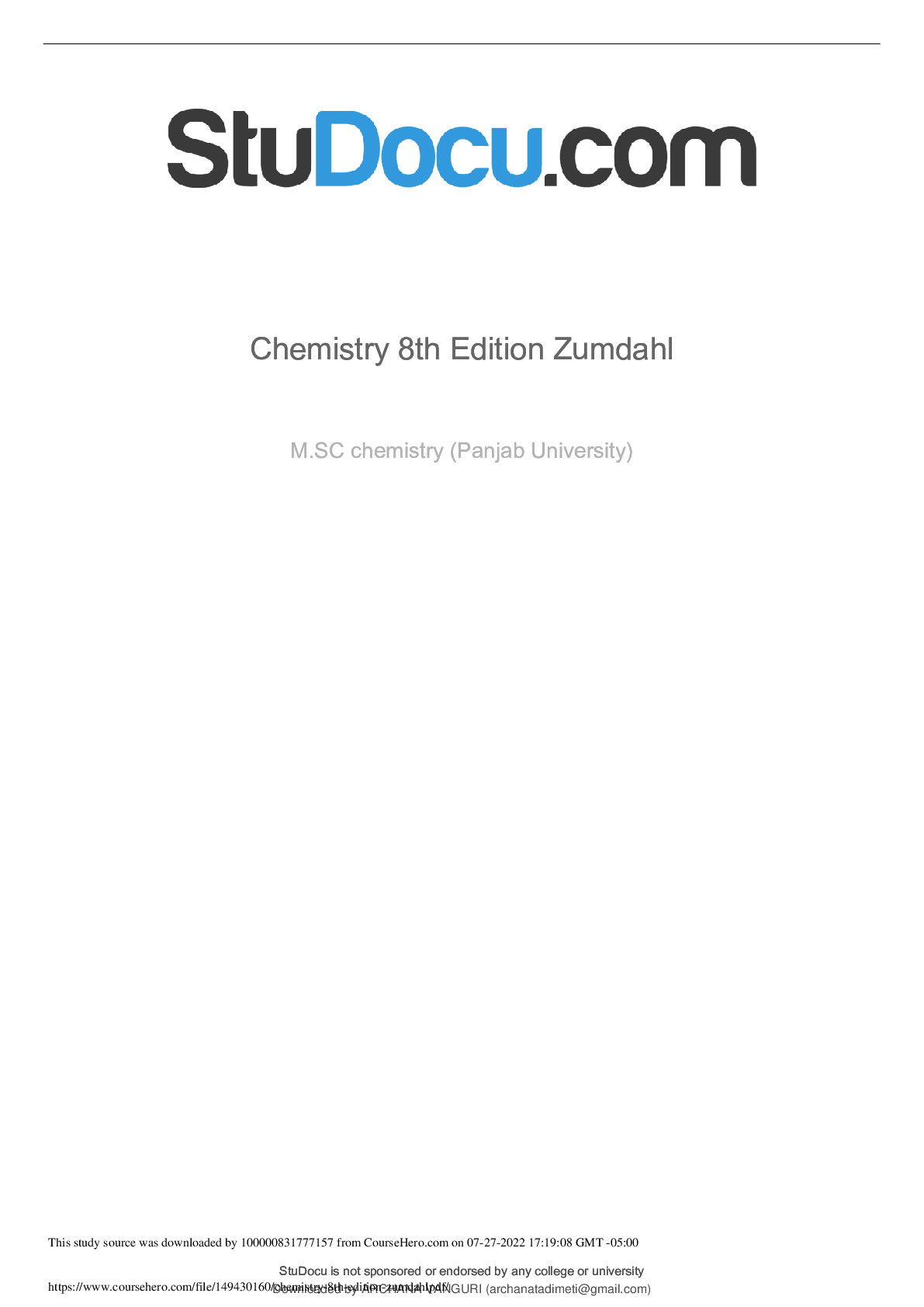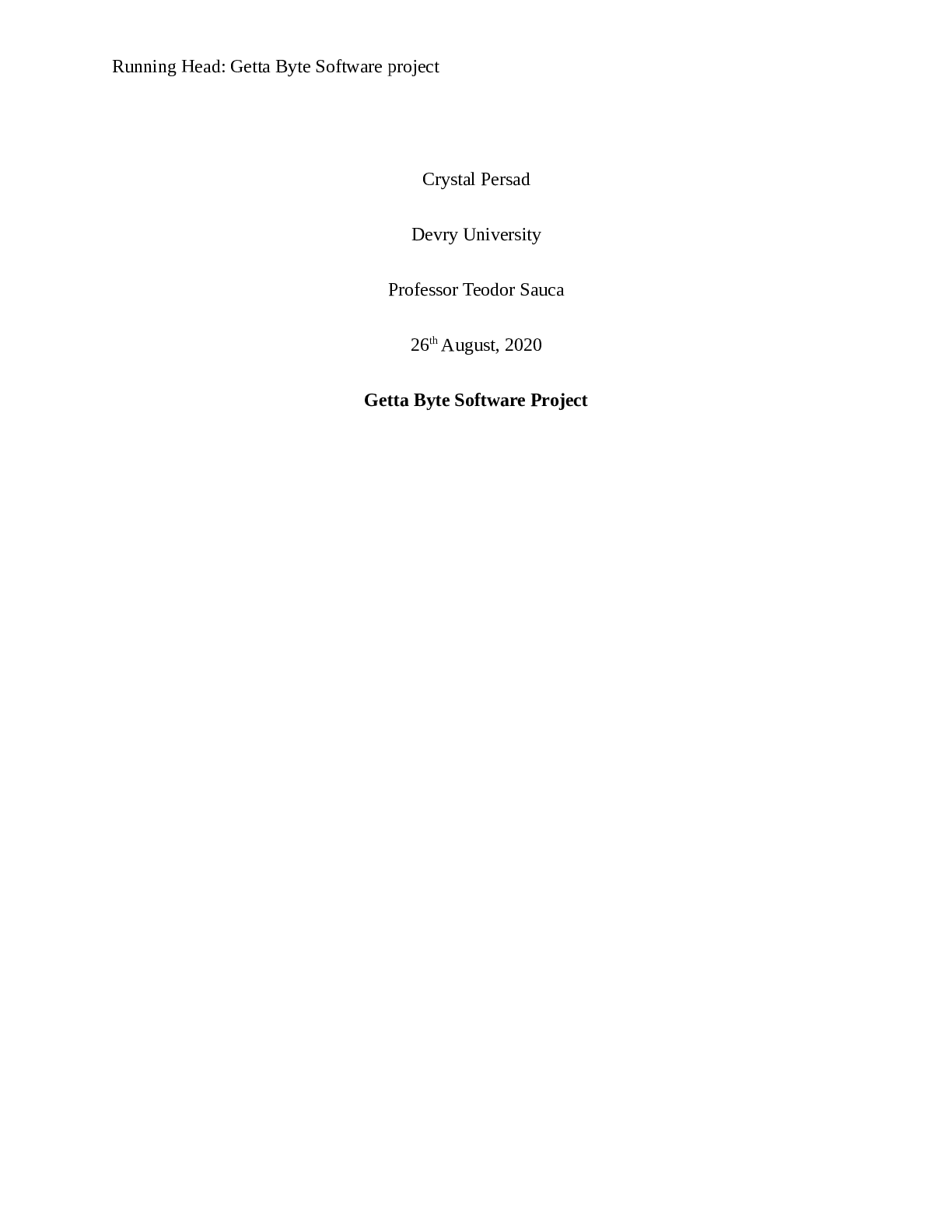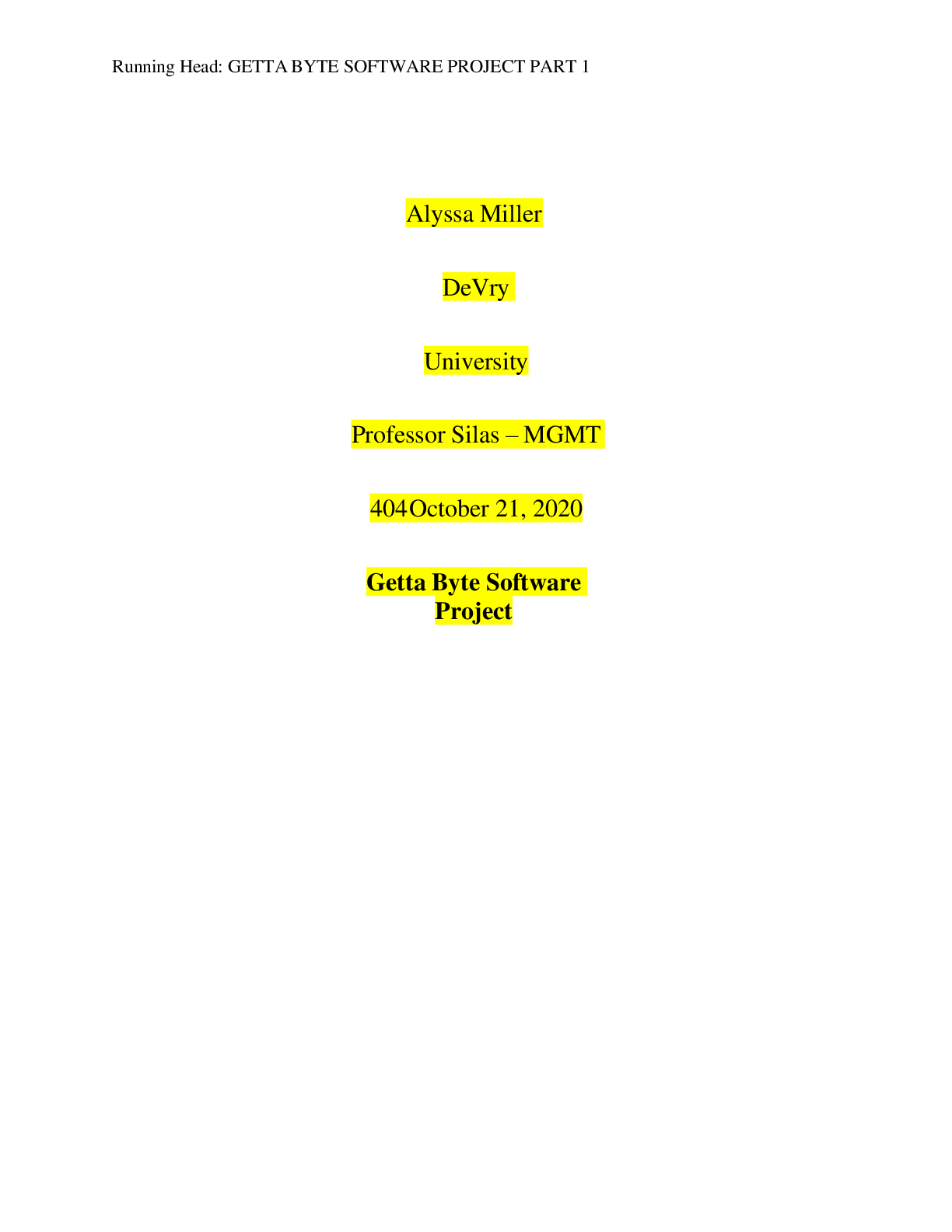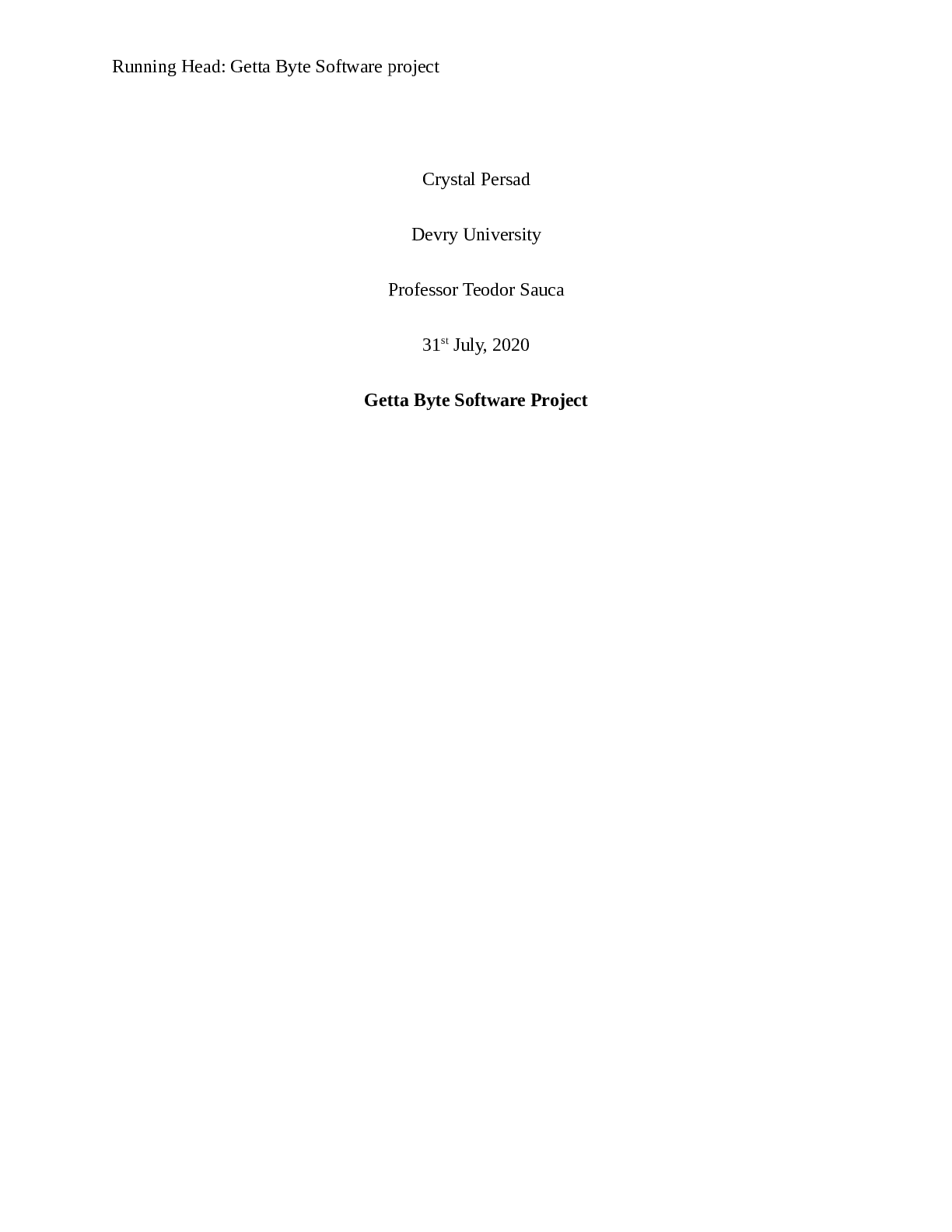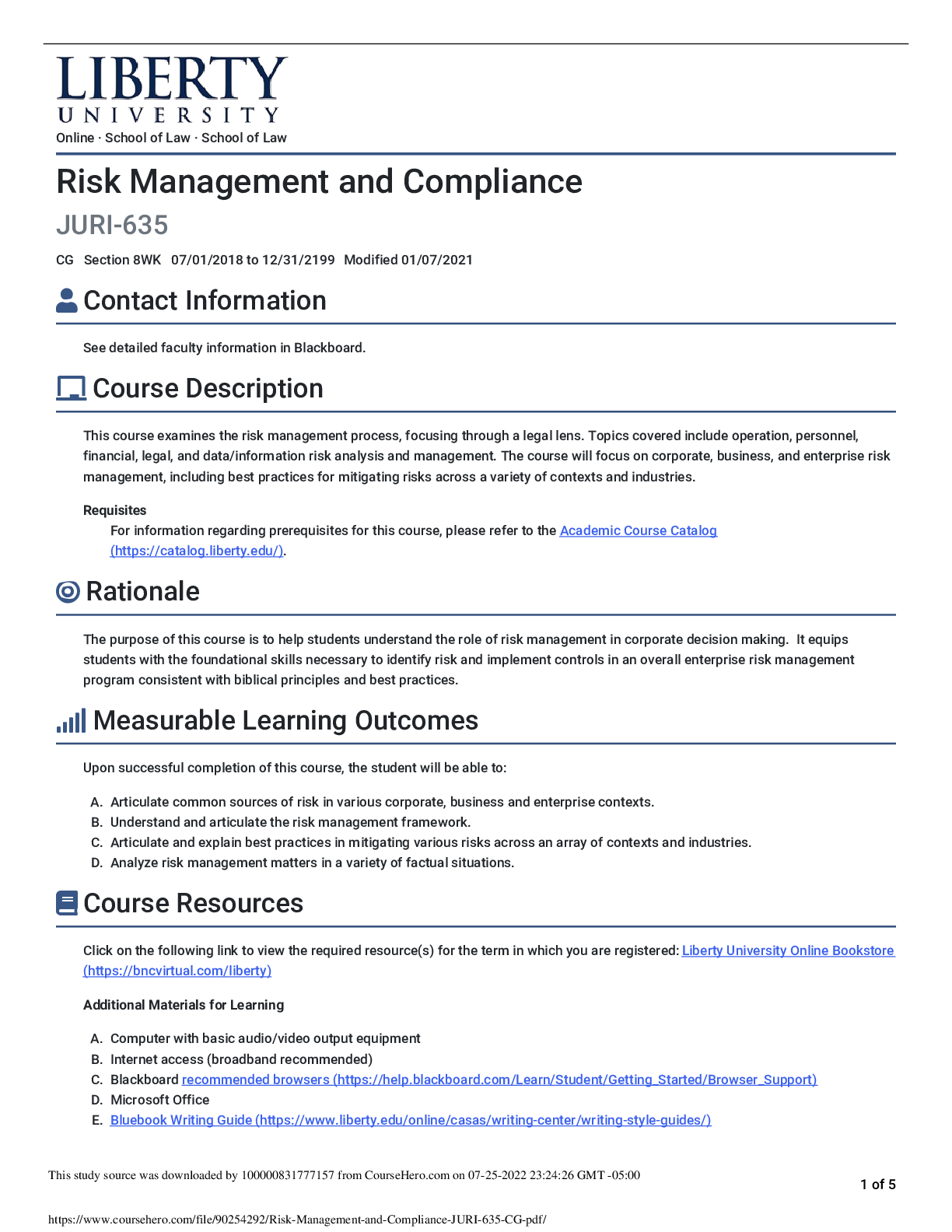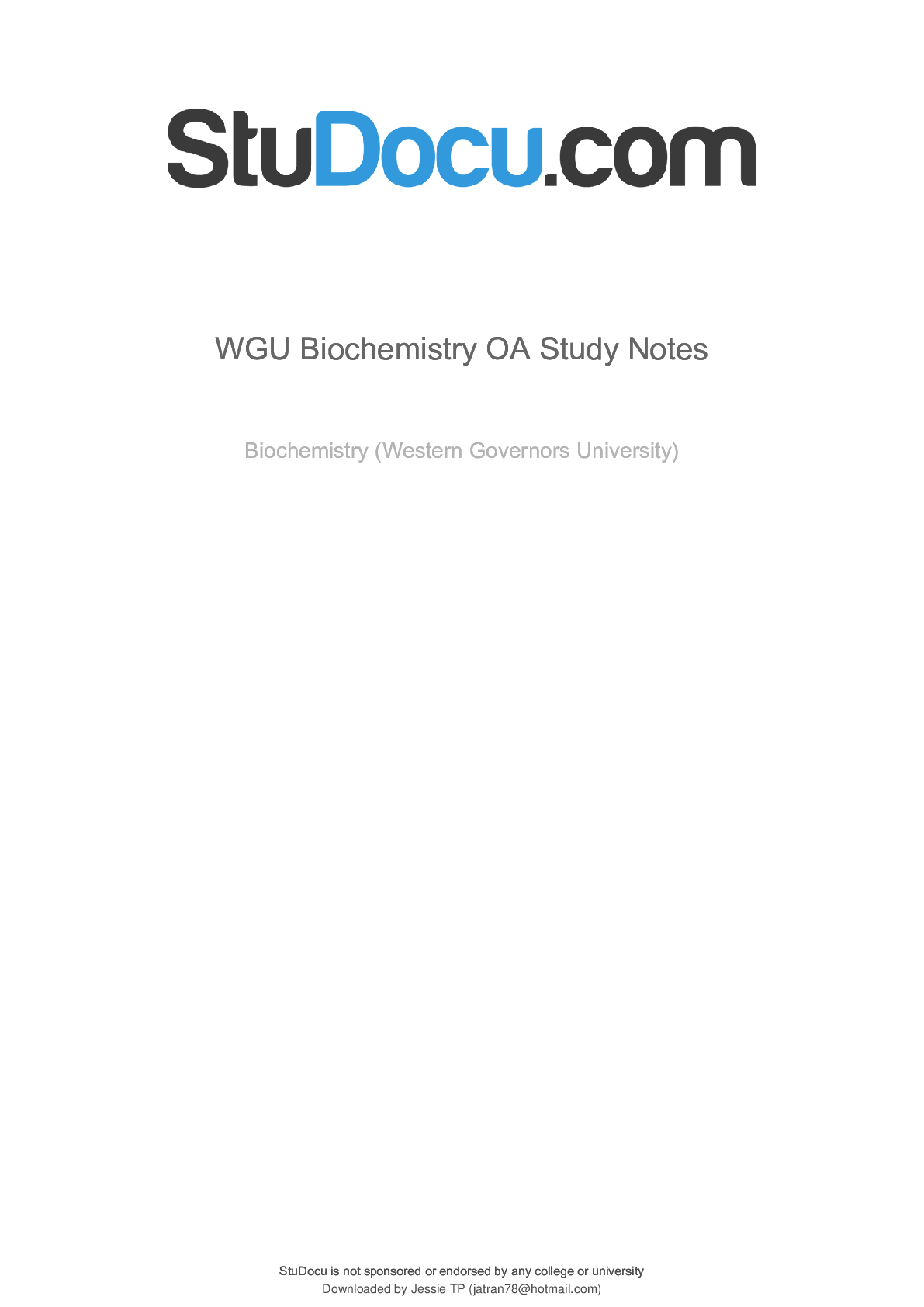*NURSING > QUESTIONS and ANSWERS > C251 Task 1 Yellow Leaf Report (All)
C251 Task 1 Yellow Leaf Report
Document Content and Description Below
Western Governors University C251 – Accounting Capstone Task 1 Report Yellow Leaf Fashion, Inc. This study source was downloaded by 100000831777157 from CourseHero.com on 08-01-2022 03:05:49 GMT... -05:00 https://www.coursehero.com/file/122847377/C251-Task-1-Yellow-Leaf-Reportdocx/ H1. Liquidity Ratios The current ratio, often referred to as the working capital ratio, compares a company’s current assets to their current liabilities in order to analyze the company’s liquidity and ability to pay off their short-term debts. For 2014, Yellow Leaf Fashion Inc. had a current ratio of 4.83. Taking this number at face value, and with a coverage rate of nearly 5:1, one may conclude that Yellow Leaf has a very strong financial position. However, with an industry average of 1.84, it begs the question of why Yellow Leaf’s ratio is so high? The substantially higher ratio compared to its peers may indicate the management of Yellow Leaf is not efficiently utilizing the company’s assets in order to promote growth. With cash more than doubling from 2013 to 2014, and total current assets from one year to the next nearly double, management should take the risk and opportunity to efficiently utilize their assets to expand and improve their business and operations. It also appears that, with an A/R balance nearly doubling each year, Yellow Leaf is highly dependent on credit customers and should be cognizant of the increasing balances of A/R as well as current liabilities in the years ahead. In addition to a substantially higher than average current ratio, Yellow Leaf’s acid-test ratio of 3.8845 puts it over 3 times higher than the industry average 0.68. This second liquidity ratio remains high, as most of Yellow Leaf’s current assets lie in the most liquid of assets, cash and accounts receivables. Ideally the ratio would hover in the range of 1:1, though industries whose operation models depend heavily on inventory, find lower ranges still acceptable. There is no question Yellow Leaf has or can get the cash necessary to immediately cover their liabilities. However, the high ratio of Yellow Leaf also further emphasizes the need for the company to reinvest assets back into the business or consider distributing portions of the profit back to shareholders. 1 This study source was downloaded by 100000831777157 from CourseHero.com on 08-01-2022 03:05:49 GMT -05:00 https://www.coursehero.com/file/122847377/C251-Task-1-Yellow-Leaf-Reportdocx/ H2. Activity Ratios The inventory turnover ratio of a company is an indicator of how many times, on average, a company sells their inventory in a particular period. For the year 2014, Yellow Leaf Fashion had an inventory turnover ratio of 1.5 times. In terms of days to sell, it took an average of 240 days to sell the inventory on hand. Though the ratio from 2014 to 2013 was improved, this turnover rate is still substantially slower than the industry average of 98 days to turnover, or sell, inventory. This could indicate that demand for and sales of Yellow Leaf’s products is weak as compared to others in the industry. However, this low turnover could also indicate the company is not managing their inventory properly. The sales department may have overestimated the demand for their product. Conversely, the purchasing department may have purchased too much inventory without consulting the sales team for estimates. The expense of holding on to excess inventory can be costly, therefore it is most desirable and efficient for sales to match inventory. Yellow Leaf should focus more on coordinating strategies of their purchasing department and sales department so that inventory purchases are better aligned with the anticipated sales. The asset turnover ratio of Yellow Leaf was 1.13. The asset turnover ratio of a company measures how efficiently it uses its assets to generate sales. The ratio of 1.13 means that Yellow Leaf generated sales of $1.13 per dollar of assets in the year ended December 31, 2014. This is only slightly lower than the industry average ratio of 1.23. Typically, the higher the ratio, the more efficiently a company is using its assets. The lower-than-average ratio of Yellow Leaf further highlights the comments made above regarding their inventory and the possible discrepancy between purchases and estimated sales. In the case that the two teams are working 2 This study source was downloaded by 100000831777157 from CourseHero.com on 08-01-2022 03:05:49 GMT -05:00 https://www.coursehero.com/file/122847377/C251-Task-1-Yellow-Leaf-Reportdocx/ together, the lower ratio may indicate the company is holding on to outdated inventory or experiencing sluggish sales below estimates. H3. Profitability Ratios The profit margin on sales ratio, or return on sales ratio, is another measure for analyzing the use of the company’s assets. Yellow Leaf’s profit margin on sales for 2014 was 0.28. This means that 28% of every sales dollar, or $0.28, was profit for the company. By itself, this ratio cannot answer the question of how profitably a company is using its assets. When considered in conjunction with other factors including margins from prior years as well as expenses in prior years, Yellow Leaf has managed to hold steady their profit margin despite increasing expenses contributed to such items as additional rent liabilities and added wages and salaries expense. Though a higher rate is desirable, it is promising that the company has held the steady margin with growth. When considered with the asset turnover from above and suggestions to tighten up purchasing and sales estimates, Yellow Leaf could see better margins when making just a few small adjustments to business practices. By dividing the net income by the average total assets, one arrives at a company’s return on assets. This ratio measures how much profit a company generates from its assets by combining the profit margin ratio and asset turnover ratio. Yellow Leaf Fashion had an ROA of 3.189% for 2014. A higher ROA percentage is suggestive of management’s ability to efficiently manage its assets to generate profits. Though lower than the industry average of 4.4%, Yellow Leaf is still in a good position. Because asset turnover is a component of ROA, again, if the company can work to reduce excess or obsolete inventory, while managing expenses, profitability can continue to grow and approach or surpass industry averages. [Show More]
Last updated: 1 year ago
Preview 1 out of 9 pages
Instant download

Buy this document to get the full access instantly
Instant Download Access after purchase
Add to cartInstant download
Reviews( 0 )
Document information
Connected school, study & course
About the document
Uploaded On
Aug 01, 2022
Number of pages
9
Written in
Additional information
This document has been written for:
Uploaded
Aug 01, 2022
Downloads
0
Views
82


